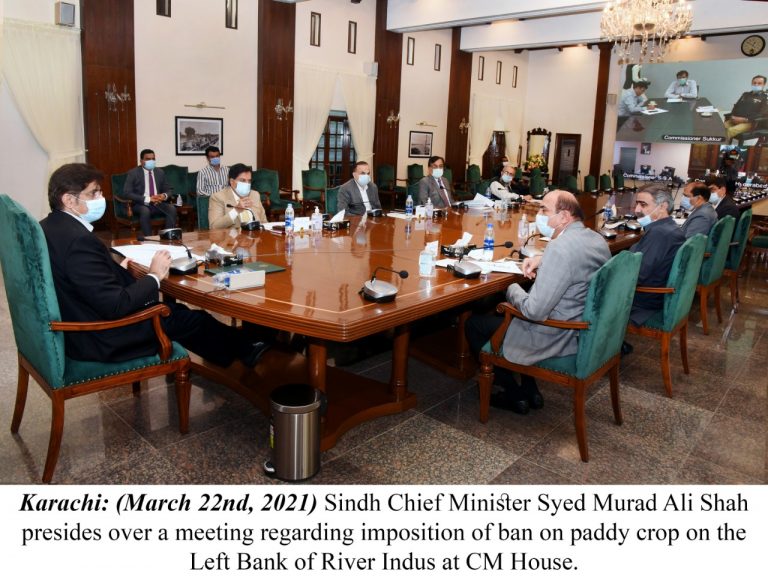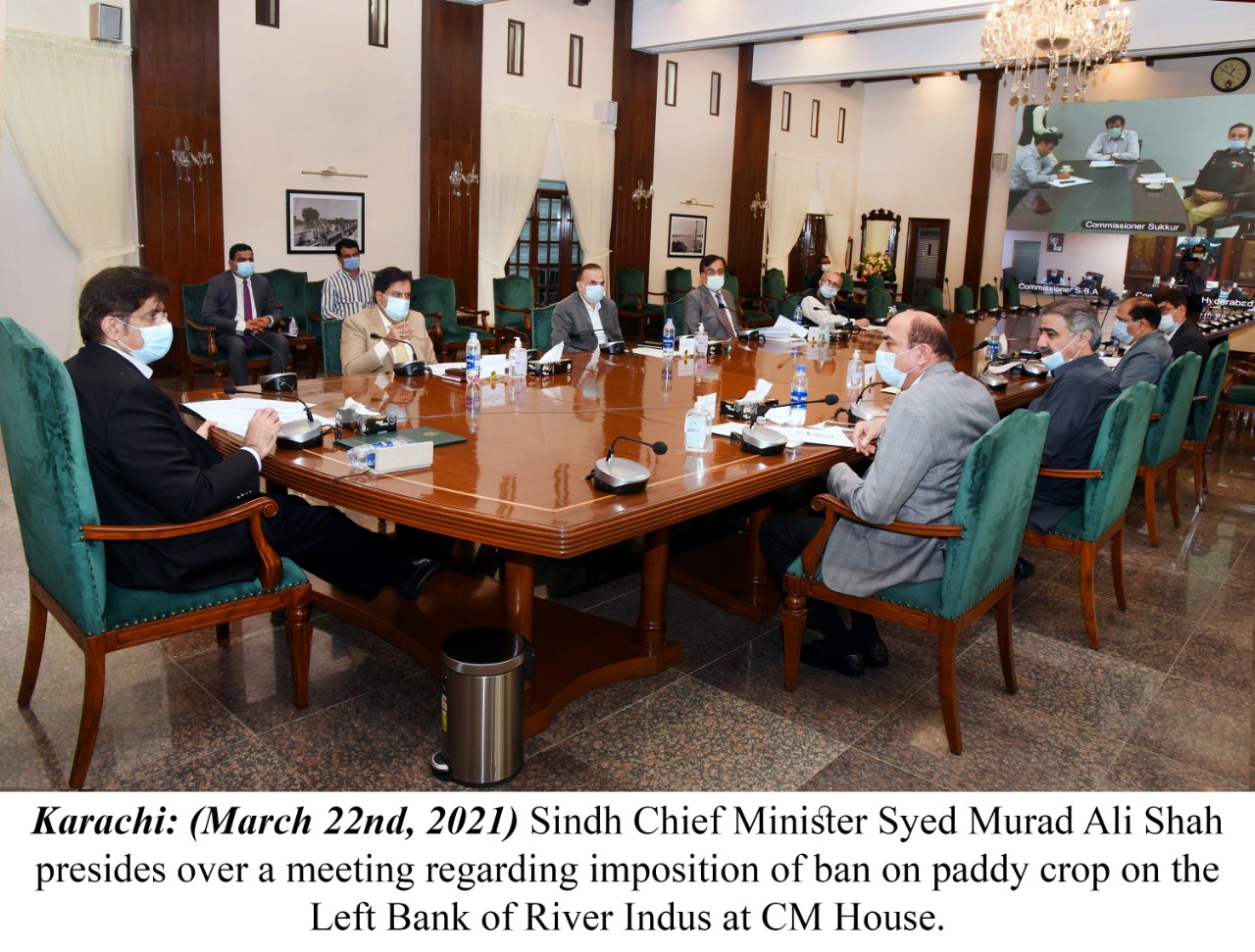
 Ban on paddy cultivation will be effective in Ghotki, Sukkur, Khairpur, Naushehroferoze, Shaheed Benazirabad, Matiari, Sanghar, Mirpurkhas, Umerkot and Hyderabad districts
Ban on paddy cultivation will be effective in Ghotki, Sukkur, Khairpur, Naushehroferoze, Shaheed Benazirabad, Matiari, Sanghar, Mirpurkhas, Umerkot and Hyderabad districts
Karachi: Sindh government, keeping in view the growing issue of waterlogging, has imposed a ban on paddy crop in the left bank of River Indus.
Chief Minister Syed Murad Ali Shah took this decision on Monday while presiding over a joint meeting of Agriculture and Irrigation departments and divisional administrations here at CM House.
The meeting was attended by Minister Agriculture Ismail Rahu, Minister Irrigation Sohail Anwar Siyal, Chief Secretary Mumtaz Shah, Secretary Agriculture Raheem Soomro and Secretary Irrigation Saleem Khuhro while divisional commissioners and DIGs of Larkana, Sukkur, Hyderabad, Mirpurkhas and Shaheed Benazirabad divisions attended the meeting through video link.
The chief minister said that the paddy was a semi aquatic (high delta) crop requiring 70 acre inches water during its lifespan. “In other words, paddy requires 16.50 mm water per day and it requires 2500-3000 liters of water to produce one kg rice,” he said and added that heavy and clay soils were needed to hold water for a long time.
Shah said that due to its water loving nature the other crops in its surrounding could not survive due to their root destruction and continuous standing water causes waterlogging too. “Standing water for a long time affects capillary tubes of soil and increases capillary movement of water upto far flung areas,” he said.
Minister Irrigation Sohail Siyal said that since paddy was a high delta crop, hence it utilizes Irrigation water share of other crops. The area ultimately creates drought like situations in the tail-end areas, he said.
Minister Agriculture Ismail Rahu said that having good structure and texture, loam, sandy loam, soils of the left bank were suitable for crops other than paddy. He added that due to cultivation of paddy on the left bank, the area under cotton and sugarcane was decreasing year after year.
Keeping in view all the factors of water logging and discouraging the trends of other crops, the chief minister decided to impose complete ban cultivation of paddy crops on the left bank.
Murad Ali Shah directed the chief secretary to bind revenue authorities to keep vigilant eye on rice cultivation on the left bank area and ensure destruction of nursery at initial stage.
The districts covering ban on cultivation on paddy include Ghotki, Sukkur, Khairpur, Naushehroferoze, Shaheed Benazirabad, Matiari, Sanghar, Mirpurkhas, Umerkot and Hyderabad.
The Agriculture department suggested to the growers of the left bank to grow low delta crops such as Mung, beans, watermelon, melon, cucurbits and other vegetables.
The chief minister taking policy decisions directed the chief secretary to impose Section 144 on cultivation of paddy crop on the left bank of River Indus. He also said that the paddy nurseries would be raised in June-July and the farmers might be sensitized to avoid paddy cultivation.
The district administration along with district police would ensure implementation of the ban on cultivation of paddy on the left bank of River Indus.
It may be noted that Sindh government imposes ban on paddy cultivation almost every year.
_______________________
Sindh Courier